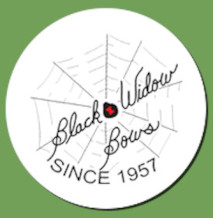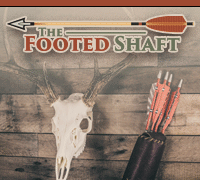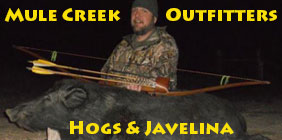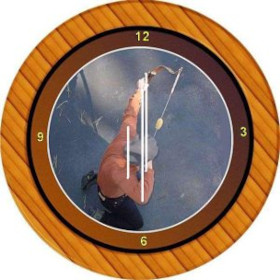Here is a list of bow woods that I found. I thought it might be useful to the members here.
Thanks for the added info. I really liked the Tim Baker bow wood list. It took me a few minutes to process that SG means Specific Gravity, or mass related to the mass of water. That being said, I can't imagine how many hours of hacking, rasping, scraping, sanding, etc. Tim and others have done to compile this kind of information. Thanks again.
Here's my list of bowwoods. Always adding to it though. Tim
NON BOWWOODS With special treatment heavier species in this group, and similar SG wood not listed here, can become light to midweight bows. This requires that they be extra long or wide, backed, tillered to a shorter draw, braced lower, or somewhat deflexed. If lightly rawhide-backed or sinew-backed a shorter bow will hold together. Especially if pulled into reflex before applying sinew. At 80” many can yield 50lb, full-draw bows. This may seem too long. But the English war bows were that long, and for similar reasons: such length allows much higher weight than if man tall. Side benefits are a smoother, low-stack draw, greater accuracy, and good speed per drawweight--if somewhat whip tillered. A useful approach is to begin with an English design 1.5” wide and 80” or longer, tillered to 50lb. Then retiller shorter and shorter until it takes about 1.5” of set.
ALDERS: red .41SG; gray .47.
ASPEN .38.
BALDCYPRESS .46.
BALSA .16.
BASSWOOD .37.
BUCKEYE yellow .36
BUTTERNUT .38.
COTTONWOOD: black .45; eastern .40.
CEDARS: western red, white .32, Port Orford .43, Alaska .44. Low SG cedars are very brittle, and about the worst possible bowwood candidates. More like balsa than bowwood. There is always the rare piece of oldgrowth heartwood or compression wood that could do a bit better. When choosing any conifer choose thin-ringed wood if possible.
CHESTNUT, American, .43.
FIRS: balsam .36, white .37, noble .38, Pacific silver .38, California red .39, Norway .43.
HEMLOCK .42.
MAHOGANY Most mahoganies and woods sold as mahogany are light and brittle. Some can reach .50 and above.
MANGO About .45.
PINES: eastern white .35; sugar .36; western white .38; ponderosa, lodgepole .40; red, Scots .45.
POPLARS Several species, all just above or below .37. Brittle. Since a same-size staves of poplar contains about half the “wood” as, say, whiteoak it will do half the work of whiteoak. Everything else being equal poplar, or similar-SG wood, can safely be made to half the drawweight, or to twice the width of whiteoak.
REDWOOD .40.
SPRUCES: black, eastern, red, Sitka, white .40; Norway .42.
WILLOW .39.
BORDERLINE BOWWOODS All of the following can become durable fulldraw midweight bows using less severe versions of the Non-Bowwood remedies, above.
ASH, black .49. Black is the lightest and weakest ash. Tested samples and bows took excessive set per mass.
BOXELDER .46.
ELEDEBERRY To .50. There are several species. Dr. Bert Grayson's elderberry in Oregon appears denser and more elastic than that tested here in the Bay Area, and made a decent bow. Elderberry is superior wood for drill and base when making handrill fires.
EUCALYPTUS Somewhat brittle in tension, chrysals easily, tends to be twisted, leaving clues to this in its bark. It’s less twisted when grown undercover and away from wind. This wood takes little set before it blows, so will have good cast as long as it holds together.
FIR, Douglas .49. Look for heartwood boards or trees with a high percentage of dark wood in the rings. 50% if you can. Such usually comes from fine-ringed, old-growth wood, more frequently seen in old doors and beams at salvage yards. Such dense fir can perform like mid-weight ash.
HAWTHORN, English, Crataegus laevigata. ???
LARCH, eastern “tamarak” .52. Several good bows reported; western .51.
MAGNOLIA, southern .50. Diffuse-porous.
PINES: loblolly, pitch, shortleaf .51, southern yellow .55, longleaf, slash .56.
SASSAFRAS is placed in this category with some reluctance. At .46, it tends to break on its back before taken cast-robbing set. Sassafras will become a fast, smooth bow if handled carefully. An ELB design makes the handle area do work, letting about 20% more wood store energy. At 1.5" wide and 76” or so long, with narrow outer limbs, it will be a durable, sweet-shooting bow. As with other tension-weak woods, a crowned English belly will offer some protection by allowing general and local set to take place, reducing back strain. If backed with light rawhide length or width can be reduced to that of a bow of typical .55 or slightly higher SG wood. All the sassafras I've seen has been thin-ringed, with a high percentage of early growth. This wood was thought well of in earlier times. Possibly better growing conditions allowed thicker-ringed, denser, stronger, more elastic wood. Possibly such wood grows today, in which case it would be rated here as a true bowwood. If given a choice select staves with thicker growth rings and low-percentage early wood. Sassafras is especially easy to work.
SILVERBELL .48.
SUMAC, staghorn 47.
SWEETBAY “Laurel Magnolia” .48.
SYCAMORE .49. Diffuse-porous.
TOYON, ‘’California holly.” This wood is fairly brittle, but good bows have been nursed from it. For Californians, bay is a better native wood.
TREE-OF-HEAVIN .52.
TUPELO .50. Diffuse-porous.
TRUE BOWWOODS Assuming sound wood, proper design and good tillering, only the lowest SG species here might occasionally need light backing.
APPLE .65.
ASH: green .56; Oregon .56; blue .58; white .59; European .61. White is our heaviest ash. Almost all sapwood. Oregon looks and behaves almost identically to White.
BAY “California laurel” .56. A Westcoast native.
BAMBOO takes more set per mass than any hardwood. It can be tempered with heat and gain in compression strength and elasticity. Fly rod makers do this, and bowmakers in the past also. Howard Hill for one. Untempered bamboo works well as belly wood if Perry reflexed. If making a bamboo selfbow it’s helpful to let the outer surface serve as belly, to prevent extreme set. The back is then composed of weaker inner fibers, but is more than strong enough. Yes, tiller on the back..
BEECH, American .64. Diffuse-porous. Usually too twisted and gnarly.
BIRCHES: paper .55; silver, white .59; yellow .62; sweet .65. All birches are diffuse-porous. Somewhat brittle in tension. As with many other similar-density woods, a light rawhide backing makes birch as durable as heavier woods.
BUTTONWOOD “Button Mangrove” .85. Found in tidal lagoons of Florida.
CALIFORNIA NUTMEG is a less-dense cousin of yew. It’s behaves like extra low-density yew. As with yew the sapwood is useless in compression. Working this wood releases a pleasant spicy aroma.
CHERRY, black .50. Diffuse-porous. Grows tall and straight. A “bright” wood, taking little set, and probably having less hysterisis/returning less sluggishly than any other common bowwood. Cherry is so light and brash it’s almost too touchy for bow wood, but once made, a cherry bow is unusually sweet and fast shooting. If the stave tree was smaller than about 5” in diameter or bow limbs wider than 2” it’s best to decrown. A thin, properly applied rawhide backing makes cherry as safe as any unbacked wood. On the other hand, Paul Rodgers, a nearby bowmaking friend, made a lumberyard board bow, about 64” by about 1 ½”, about 55lb at 28”. It’s still shooting after several years of use, still surprisingly straight-limbed and fast. This bow represents the good extreme. Sapwood takes more set in compression than heartwood.
DOGWOOD, flowering .73.
EASTERN REDCEDAR .47. An exceptional bowwood if handled appropriately. It’s a juniper, not a cedar, having berries instead of cones. Purple-red heartwood. Redcedar is quite elastic per mass. Limbs are thicker or wider per bend resistance. Somewhat weak in tension. Again, a thin rawhide backing makes it as tension safe as any wood. As with juniper and yew it’s well matched to sinew, the backing riding higher above the neutral plane for greater leverage, the wider ribbon of sinew holding the bow in greater reflex. An all sapwood bow is possible, but sapwood takes considerably more set than heartwood. The boundary between sapwood and heartwood can suddenly plunge several growth rings from one area or spot to another, possibly more so than any other wood. Knot-free lumber staves are almost impossible to find, more so than any other wood. Knot free wood is best found growing in dense shelter or with one side hard against another tree.
ELMS: English .49; American .50; slippery .53; wych .60; rock .63; Winged .66; paper; white; Texas; flowering. Wych elm grows in England, where it was thought of as best of the “otherwoods.” Elms are especially strong in tension compared to compression. Therefore, as with the hickories, elms hold up in overstrained designs. Three unidentified elm logs from Texas yielded limbs denser than other elm, more massive per drawweight, and taking more set. Its creamy wood polished as smooth as ivory. If these three logs were typical of the subspecies this is one of the rare woods which is less efficient by its nature.
HACKBERRY .53. Similar in looks, structure and design to elm.
GONCOLO ALVES About .80. Tropical. Dark red brown. An especially pretty bowwood.
HICKORIES: shellbark .69; mocknut, shagbark .72; pignut .75. Due to their extreme strength in tension the hickories are about the hardest bows to break and, unless at least moderately violated, never need backing. Hickory is used for backing other bows.
HOLLY: American .56; English .68.
HORNBEAM, American .70.
HOPHORNBEAM Eastern .70, can be treated as if a somewhat heavier maple.
IPE 1.08, heavier than water. Tropical.
JUNIPERS All junipers make great bows. As is true of wood in general, the denser the juniper the shorter or narrower a bow can be per given weight and draw. Juniper, of all the bowwoods, is possibly the best match for sinew--as per redcedar, it is thicker, wider, and less stiff per mass than other woods. The hardest part of making a juniper bow is finding a long-enough straight stave. Two short staves can be spliced together at the grip. Ishi’s people used mountain juniper branches before the ax arrived. Saplings and branches two-inches in diameter or less work fine, especially if sinew backed. Inner bark can sometimes be confused with surface sapwood, leading to broken backs.
KENTUCKY COFFEETREE .60.
KOA .60. Hawaii.
LEMONWOOD “Degame” .67. One of the icon woods of archery. At one level it’s disappointing to discover it’s just another wood, no better or worse. About the weight of pecan, not as strong in tension, taking a touch less set per width. Heartwood is stronger than sapwood. Based on personal bend tests, if back fibers are much violated it will break like any other wood.
LIGNUM VITAE “Ironwood.” Heartwood is about 1.14, heavier than water. I’ve made one bow from its sapwood, density estimated at .85. A bend test yielded ¼” of set when bent 3” to 38lb. Osage yields about 3.5” at 34lb. A slight thickness adjustment would have them testing the same. An osage-design bow took near zero set. A heartwood bow might best be 20% narrower than Osage.
LOCUST, black .69. Stronger in tension than compression. A flat-back design is fine, but a crowned-back, wide-belly design is ideal, as from a smaller diameter limb or trunk. This wood is more likely to fret and chrysal, but here there is variation between trees. Nature loves bowmakers. She knows it’s hard to tiller a bow for best safety and speed, so she gave us the locust tree as teacher. If a locust bow develops clusters of frets in one or a few small areas this is locust’s way of telling us we haven’t tillered the bow well. The fretted areas were put under greater strain, the unfretted areas loafing . Someone may think they’ve tillered a bow perfectly, but in the case of locust, the bow will actually tell you if you have or not. A well tillered bow will either have no frets, or else small frets spread along almost the entire length of the limb. If a locust bow is tillered perfectly and still develops frets, this is locust’s way of saying we haven’t designed the bow properly for its weight, length and draw. The locust stave is a classroom.
LOCUST, honey .66 A little less dense than black locust.. One of the prettier woods. Its sapwood is about twice as thick as that of black locust. Thorns grown on both trunk and branches
MADRONE About .60. Somewhat brittle in tension. Rawhide would help here. Some have reported shorter madrone bows breaking even when lightly sinewed.
MAPLES: bigleaf, silver .47; red .54; black .57; rock/sugar .63; vine, about .60. A vinemaple bow is thicker than most. John Strunk discovered and announced the good qualities of this wood. He points out that when felling staves it’s important to indicate which side more faced the sky, which side the ground. Important because most vinemaple leans as it grows. Even more so than with other branch staves, if a vinemaple bow’s back is made of side wood it will twist during tillering. This is an important consideration when ordering staves. As with other strong-in-tension woods, there can be an advantage to a crowned back in medium to narrow designs. The crowned back has less mass, the flat-belly takes less set, so outshoots flat-back versions. The lighter maples are somewhat brittle in tension. All maples are diffuse-porous. Rock and sugar maple are the same wood.
MESQUITE, honey .81.
MOUNTAIN MAHOGANY About .80. Very heavy, hard, tough, wood. “Doc” Safford of S. California reports good results with this wood.
MOUNTAIN LAUREL .68.
MULBERRY, red .66, a distant cousin of Osage. A mulberry bow should be about 15% wider than osage, all else being equal. As with locust and osage, a ring or two of sapwood can be left on the back if the wood was felled and dried before sapwood decay began.
OAKS: California black .57; southern red .59; northern red, sessil, pin, bur .63; scarlet .67; white .68; Whiteoak is about as close to unbreakable as wood can be. In my bend tests it breaks after hickory. Bows I’ve made of white oak took large sets without much excuse. On the other hand, I haven’t been able to break a bow made from this wood. One was steamed into 6” of reflex. When tillered it took 7” of set, standing at one inch of string follow at 55lb, and equaled the cast of any equal-follow bow. Of several whiteoak bows, from several different trees, the one that stayed straightest was fine-ringed, high-percentage early growth. Quite strange. One correspondent reported less set in his white oak bows, others report similar set. White oak is extremely strong in tension. Swamp white, Oregon white .72; Live .82. Semi-ring-porous. Our heaviest oak, and the only non-ring-porous oak.
OSAGE At about .82, osage is the heaviest common native North American wood, except occasionally for live oak. It seems that light yellow osage is less dense, weaker, takes more set, and is more brittle. For equal safety less-dense osage should be a little wider or a little longer than denser, darker osage. Staves having a low percentage of early wood are also heavier and stronger. Osage is easily heat or steam bent. Everything else being equal, osage will make the narrowest bow of all common US woods. For osage to equal the cast and low handshock of lighter woods outer limbs and tips must be proportionately narrower. [osage disadvantage, brittle if low m.c.]
PADAUK .67. Diffuse-porous. Tropical. Tested samples were somewhat brittle in tension, but this may not be typical.
PALM Black palm is the most commonly used. Palm is not wood in the normal sense. Related to grass and bamboo, it doesn’t grow by adding a new ring each year, gradually increasing in diameter. Instead it exudes out of the ground like bamboo, or animal horn. And somewhat like bamboo it is denser at its surface, gradually becoming less dense moving toward its pithy center. As with bamboo, set can be reduced by using its outer surface as belly. I’ve seen bows from Amozonia reversed in this manner. If a stave came from a large diameter tree the density difference within the first inch likely wouldn’t justify reversal. But small diameter trees of this very hard wood are easier to work with primitive tools. Long, narrow, bows are therefor easier to make than shorter, wider bow, and this is the most common primitive design. Generally found in areas of high humidity these bows are also unusually long in order to prevent set. Once dry, palm will serve for any design.
I have a 50lb black palm bow, which even at 75” is only 1” wide and ½” thick at midlimb. Very stiff wood. This bow was made and used by the Bari people of the South American rainforest. It took many monkeys from many trees for many years in extremely high humidity. In our drier climate the bow gained considerable weight so was retillered. It still has only ¾” of follow. The bow is more than a foot taller than its maker. The wood is dark and dense and heavy, about .90-plus by the feel of it, so heavy its outer limbs must be unusually narrow to avoid handshock. Hardwood yards sometimes stock palm, but seldom surface wood, so density/strength/elasticity will vary per its place in the tree. Adjust limb width per density.
PEAR .73.
PECANS: nutmeg .60; water .62; bitternut, pecan .66. All in the hickory family. Pecan and hickory are often sold under the same label in yards.
PERSIMMON .74. Interlocking grain. Semi-ring-porous. Very attractive with an off-white sapwood back and dark belly. Tested samples and bows took slightly more set per mass, but strength in tension allowed corrective reflexing
PLUM About .70. A desirable bow wood, both for its beauty and toughness. But it’s one of the most difficult to dry without cracking and checking. After felling, if you don’t intend making a bow immediately, leave the bark on and seal the ends with two or three coats of paint or glue, or a paraffin dip. A day or two might be needed for the ends to dry enough to hold paint, but don’t wait too long . If making a bow straight off, remove its bark the first day or so while it will pull off freely (possible during the growing season only). A dull table knife helps. Otherwise bark must be worked off with sharp tools. This is more work and often leaves a marred back. You might want to leave the bark on smaller diameter branches and saplings. It makes a beautiful back. Plum bark will crack when drawn unless the more brittle outer layers are sanded down, leaving the more supple but still dark plum-colored young bark. This is especially needed on older branches. When the finished bow is oiled this young bark turns a rich, near-black plum. 30lb bows can be made from branches as small as 5/8”; 40lb from ¾”; 50lb from 1”, and on up. If you leave the bark on the entire branch drying can take a couple of years. Better to floor tiller the bow, keeping it full width for full length to avoid lateral warping. Coat exposed wood with carpenter’s glue and it will be dry in a couple of months. If you take the bark off of the back and floor tiller the branch, keeping it full width for full length, the wood will be so thin it likely won’t check or crack (unless in very low humidity air) and will be dry in ten days or so. Narrow branches make long, narrow bows. Wider branches can make shorter, wider bows. Again, when drying wood, the most valuable item you can own is a humidity meter. Know the humidity and you know finished moisture content. 45% to %55 is a good target humidity, yielding about 9%MC.
PURPLEHEART .82. Diffuse-porous. Tropical. Usually from heartwood board staves. Purpleheart has the compression elasticity of perhaps .70 wood, fretting more easily than other woods. Pretend you’re making a bow of hophornbeam to be safe. Or, even more carefully than with other woods, execute thickness taper so that no portion or the limb is overstrained—no local or general dips or rises. If once past mid-limb you taper in a straight line to narrow nocks outer limbs will be light enough to pay for slightly wider mid limbs. Handshock can be a problem with such heavy woods; narrow outer limbs and tips help here also. A couple of my early purplehearts blew due to small hard-to-see back knots. A thin hickory backing looks good on this dark wood (rawhide too). A hickory backing can be applied in Perry fashion, protecting the belly as well as the back.
RAMIN .59. Diffuse-porous. Often found in the form or dowels and tool handles.
ROWAN “Quicken” “Mountain ash” A small tree native to the north and west of Britain, is mentioned in a beautiful little book, “British Woodland Trees,” written in the 1940’s by H. I. Edlin. It’s said that the wood is reddish brown and tough and that the fruit makes an edible jelly. Used by the British in past centuries.
Several current European bowmakers have reported good result with European rowan--Sorbus aucuparia, about .60 specific gravity. And Orgeon bowmakers have use the American version, Sorbus americana.
SERVICEBERRY About .70.
SNAKEWOOD 1.0-plus. Very dense tropical wood. Thought highly of in the past, it was once harvested in southern Florida and still may possibly grow there.
SCOTCH BROOM is a yellow-flowering little bush that grows along the roadways of California, watered by runoff from the crowned streets. It’s like countless other such plants, in that at first glance it seems more like a useless weed than the makings for an first-class bow. There are surely scores of such unsung shrubs waiting to sling arrows as well as the known woods if just given a chance. Scotch Broom is a great little bow wood. Dense and tough. If any size at all it tends to be twisted and gnarly. This wood tends to check easily when drying, so treat it like plum. Use trunks as narrow as 1” in diameter. Two such “trunks” spliced together at the grip will yield a 66” or so bow. The high crown will be safe, the resulting low mass only improving cast. The narrower the limb the longer the bow should be. But sub 48”, even 36”, self staves make evil little “Indian bows, the shorter ones limited to 40lb with drawlengths just under half of bow length. 50lb-plus, and stronger draws, can be gotten from mid-50” and longer bows.
SUGARBERRY .51.
SWEETGUM .52. Diffuse-porous. Good bows have been reported.
TANOAK .65, semi-ring-porous.
TEAK .57. Oily, extremely rot resistant. Tested samples and bows were slightly brash.
TROPICAL WOODS Space only allows a few here. There are scores available. Any over .50SG will serve.
TULIPWOOD .86. Tropical.
WALNUT: black .55. Semi-ring-porous, easy to work, elastic for its mass, similar in performance to cherry, but more tension-safe. Will try to chrysal where cherry won’t. A wonderful, overlooked bowwood. Bows can be all sapwood or all heartwood, or mixed, sapwood taking a bit more set in compression. The off-white sapwood can be worked down to 25% or so of limb thickness, creating appealing contrast with the almost black belly. Very high heartwood extractive level, so as with similar woods, it may be more resistant to water absorption. It’s reported not to warp with rising and falling humidity, possibly for this reason.
WALNUT, European .56. Design as per Black. Not as pretty, but makes a nice bow. Strong enough in tension to tolerate being a “backward” bow: the crowned sapling surface as belly, the split back surface tillered.
WENGE. About .67, determined by comparing same-size samples to known SG woods. African hardwood. Common in hardwood yards. Oils to a rich near-black. Looks impressive with a white hickory or rawhide back. When worked, wenge dusts up badly on its back, causing backs to pop off unless cleaned unusually well before gluing. The wood seems somewhat oily. Of possibly 100 boards observed, all were fairly thin ringed, but with even thinner earlywood. Wenge is more brittle in tension than same SG pecan. It won’t allow the same degree of back fiber violation or as much overbending before breaking. A Uniform Bend Test sample took ¼” of set when bent 3.5” at 24.5lb An average of three osage tests yielded 3.5” at 34lb. So, at equal thickness Osage and wenge were equally elastic, but wenge would have to be about 30% wider to have equal drawweight at equal set. This is based on just one wenge test, but comports with wenge bows I’ve made.
WITCH HAZEL .60.
YEW, pacific “Taxus brevifolia” .63. Sapwood is strong and elastic in tension but takes enormous set in compression. Heartwood is elastic in both tension and compression. The back of a heartwood-only yew bow is safe and efficient. Sapwood/heartwood will bend a little farther before breaking, but would have to be far overstrained for this margin to come into play. Knowing this allow the use of inner splits of yew as selfbow staves. Low level yew, on average, grows faster than at high levels. Fast-growing, thick-ringed conifers yield lighter, weaker, less elastic wood. The opposite is true of hardwoods (diffuse-porous hardwoods may be as strong whether thin or thick-ringed). Unlike hardwoods, the percentage of late growth is usually higher in slow growing conifers. A crowned belly will increase safety in an overstrained design, as per the 100-plus-pound old English warbows. A crowned back will help performance, having lower limb mass. But for safety you’ll have to stay true to a back ring, or close to it. Due to its low bend resistance and high elasticity, yew can be narrow and thicker than any other wood, save possibly juniper. Only yew will make a same dimension and weight old English warbow. Horn nocks are not just for show. Yew is soft, and bowstrings can eat into the nocks on especially heavy bows with narrow strings. From one point of view, the more hoary and wild a yew stave the better. Yew bows full of pins and even untouched twigs, a few yew leaves waving in the breeze… such bows look ancient and full of mystery. Surely the Druids made them this way.
YEW, European Taxus baccata .66 on average, thin-ringed being considerably more dense than thick-ringed.
ZEBRAWOOD About .68.
|














